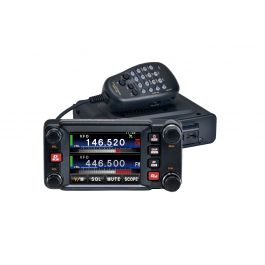And now, a word about nets
A ham radio net (derived from
network) is an on-air gathering of people with common interests. Those interests might include emergency preparedness, specific areas of the ham radio hobby, religion, location, or--in our case--four wheel drive recreation. Nets use amateur radio as their communication medium. During nets, people can check in, listen to a training topic, participate in a general ("roundtable") discussion, or share important information relevant to the group.
The vast majority of nets are
directed. This means there is one person acting as Net Control Station (or Net Control Operator), and it is their job to maintain organization--think of them as a traffic controller. For a small net like ours, net control may also take on the responsibility of introducing the topic of discussion and/or sharing whatever information needs to be presented to the group. With a large group, net control may only direct the participants to speak in turn without actually sharing any information himself.
By definition, you can also have an undirected net. In that case, everybody who wants to share info is going to try and speak up at some point to say what is on their mind. I've never participated or even listened to an undirected net, but I imagine it would be much more chaotic than a directed net and would probably involve a lot of doubling. Even a small bit of organization can go a very long way.
You can also refer to nets as either
participation or
non-participation nets. In a participation net, everyone who checks in will be invited (and is expected) to take a turn keying up to address the entire group. Usually there will be a question of the day--how was your weather today, what has happened in your life since our last net, etc--and everyone will give their own answer in turn. In a non-participation net, everyone will check in but then only those participants with info to share will be asked to speak; the rest can simply listen without keying up again. Since the entire reason RME started our net was to (a) test/verify proper radio operation and (b) give practice time to each of us, I decided we should definitely be a participation net. That's why I try to have a question or topic handy each time.
As with many aspects of radio operation, the best way to familiarize yourself with proper net protocol is to listen to a variety of nets. Here are a few that I will join, schedule permitting:
- The Utah 76ers net: 146.760 MHz (no tone), Wed 7pm. Non-participation net for the '76ers social group.
- Lehi CERT net: 448.925 MHZ (100.0 tone), Wed 8pm. Participation net for Lehi CERT members and anyone interested in emergency prep.
- Jackson Hole Area net: 146.760 MHz (no tone) Mon 8pm. Participation net that links to this Utah county repeater.
Of course, there are many, many more. Those of you who are LDS may have a stake-run net which happens every week; check with your emergency prep specialist for info. My friend Noji has a large list of nets compiled on his web page; you can see that info here:
https://noji.com/hamradio/hamnets.php
Like me, Noji lives in Utah county so much of his info may not help you guys up north.

What other questions do you have about nets? I'll do my best to answer them.


